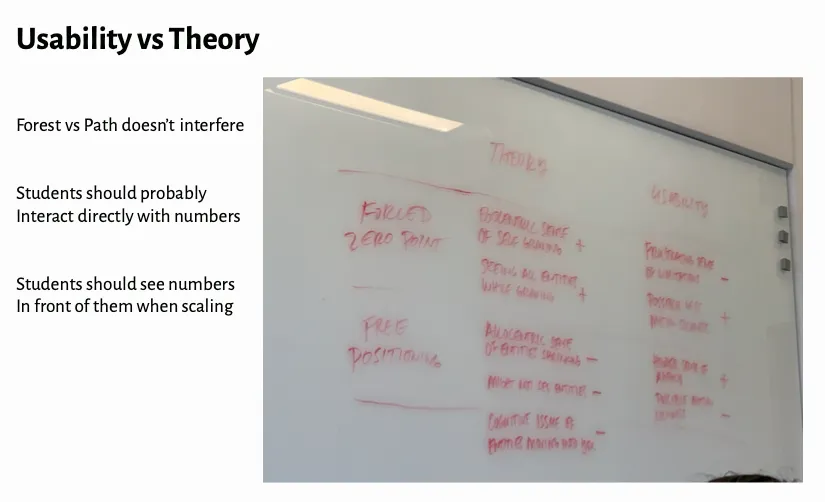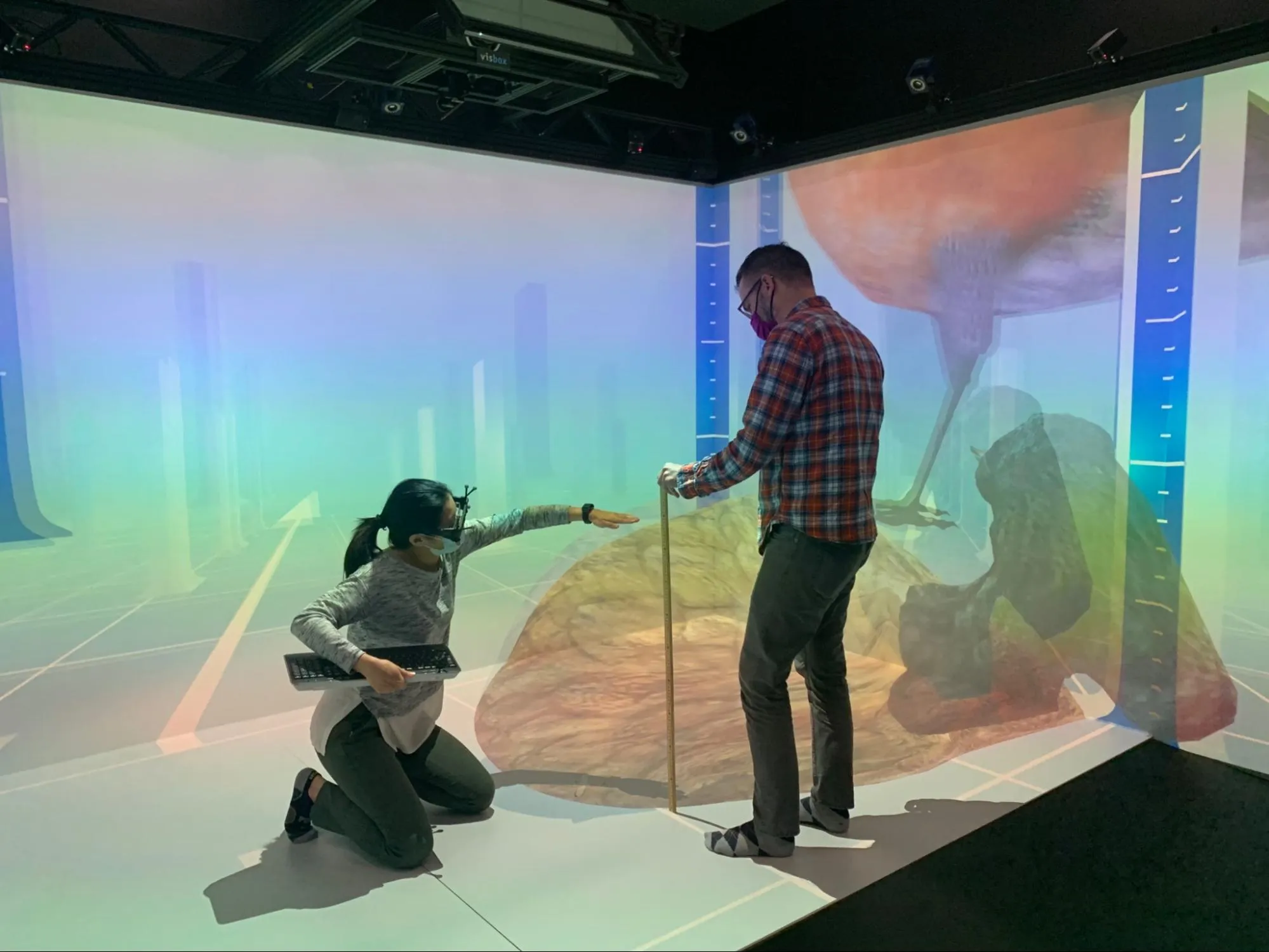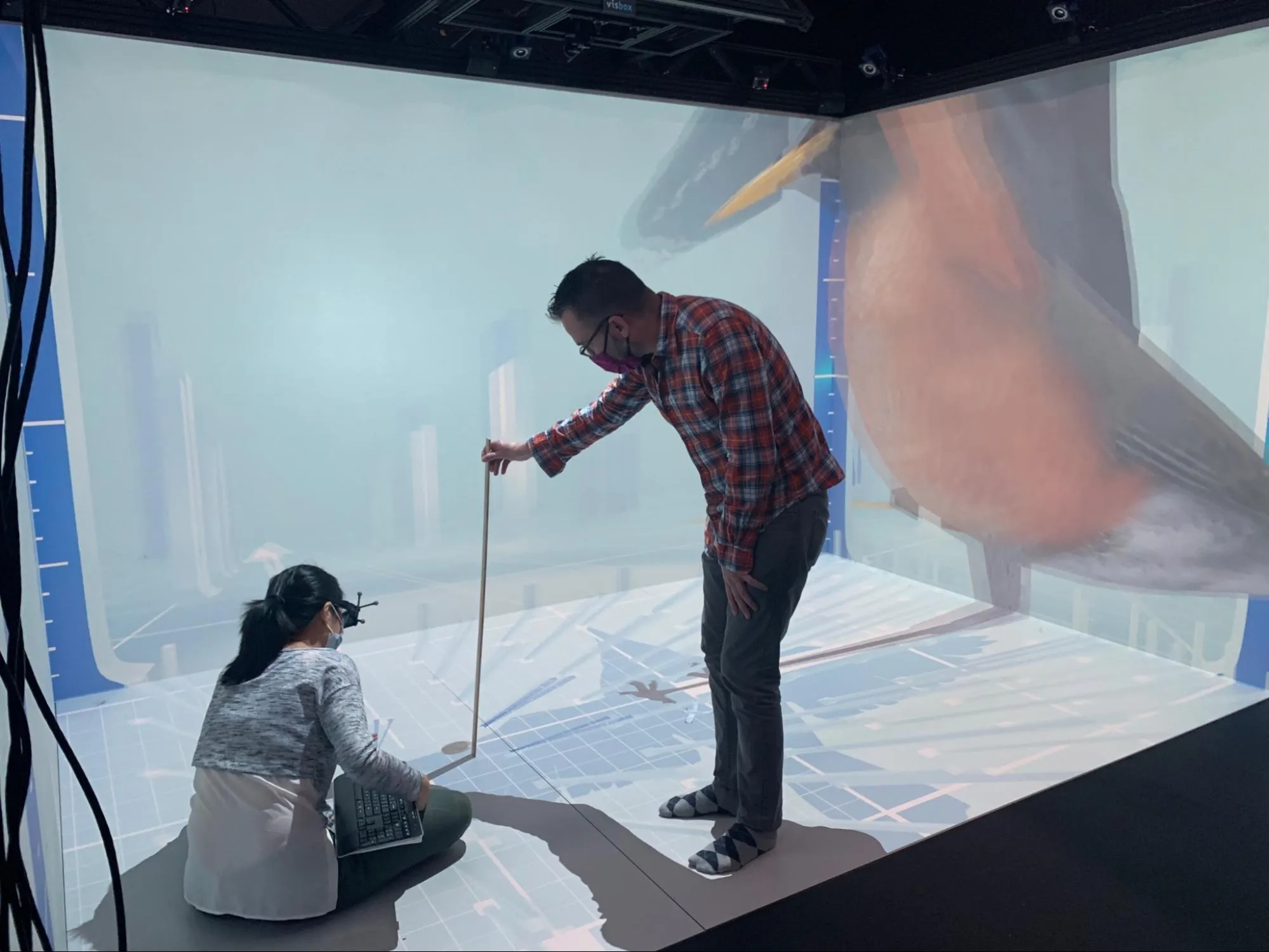Scale Worlds
Virtual Reality
Research
Education
Virtual Reality
Research
Education
2021–2023
Dr. Matthew Peterson
Dr. Karen Chen
Dr. Cesar Delgado
Linfeng Wu
Tyler Harper-Gampp
Amanda Williams
Rebecca Planchert
Meghan Jack
Elizabeth Chen
Scale Worlds is a virtual learning environment which enhances participants’ conception about size and scale. It has been funded through a National Science Foundation award titled Virtual Reality to Improve Students’ Understanding of Scale in STEM. For two years I worked under the guidance of Dr. Matthew Peterson and in close collaboration with professors and doctoral students from the Human Factors Engineering and STEM Education departments to design and develop this scale cognition learning environment. In this project, I have also acted as manager for three hourly design technicians.
I was highly involved in this project, taking on diverse tasks including drafting design documents, planning out the user experience, coding in C#, 3D modeling in Blender, and developing in Unity. I have assisted in running two rounds of qualitative usability studies. Results from the first round have been published in a Human Factors journal. The majority of our design decisions have been made in response to the usability studies or are backed up by literature on the subject. Alejandra Magaña’s Framework for Size and Scale Cognition has been an invaluable resource during our design process.
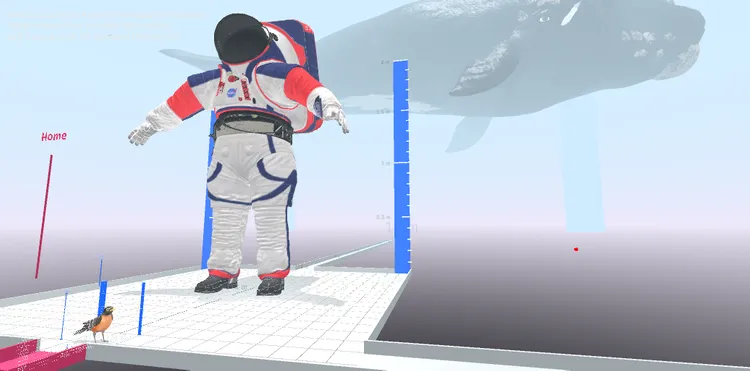
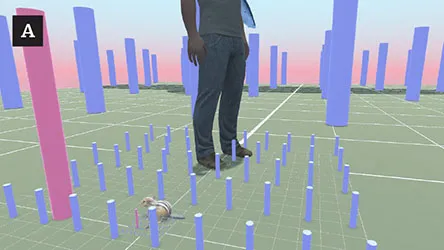
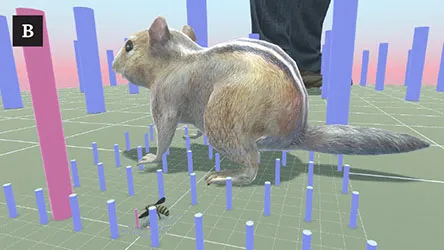
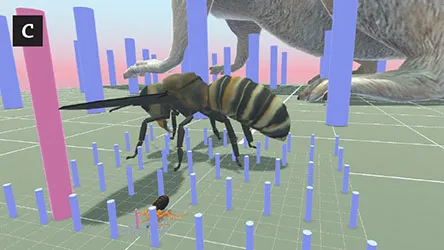
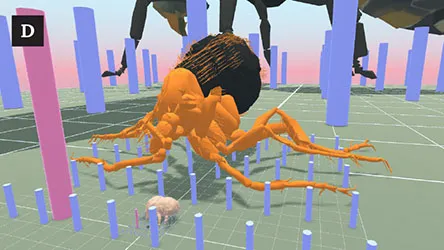
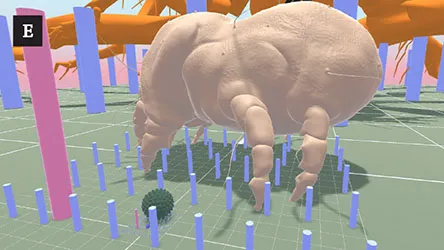
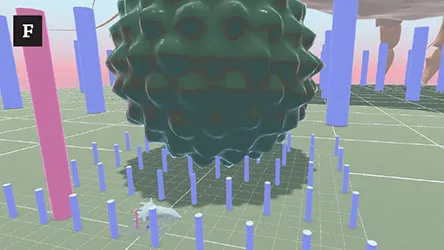
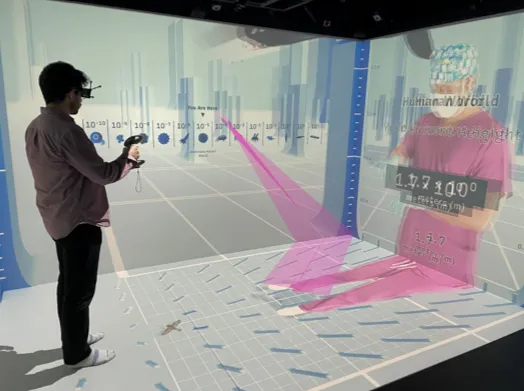 Cave Augmented Virtual Environment (CAVE)
Cave Augmented Virtual Environment (CAVE)  Head Mounted Display (HMD)
Head Mounted Display (HMD)
When designing the new version of the environment, the scheme was
split up into 3 main sections

user interface: flat interactive elements
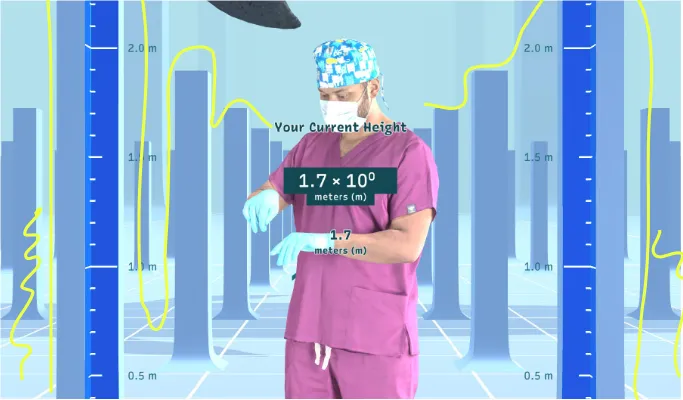
armatures: three-dimensional things which aren't entities
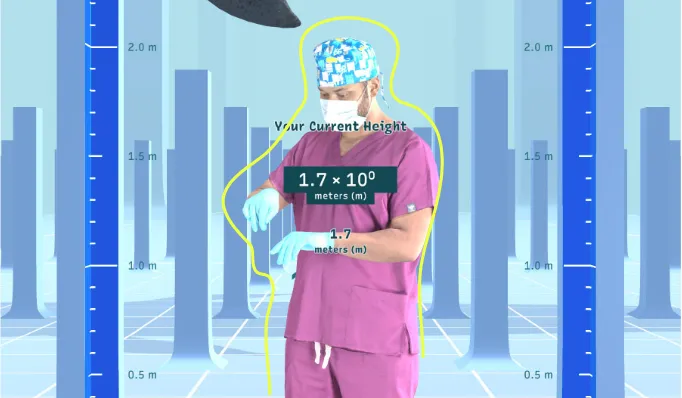
entities: three dimensional things like animals, stars, atoms, cells, etc. which are used as landmark things to measure
The way in which the user interacts with the environment was
designed to mimic changing an exponent in scientific notation and
moving decimal places in standard notation: concepts seen in
American science and math curricula

Animation of decimal moving
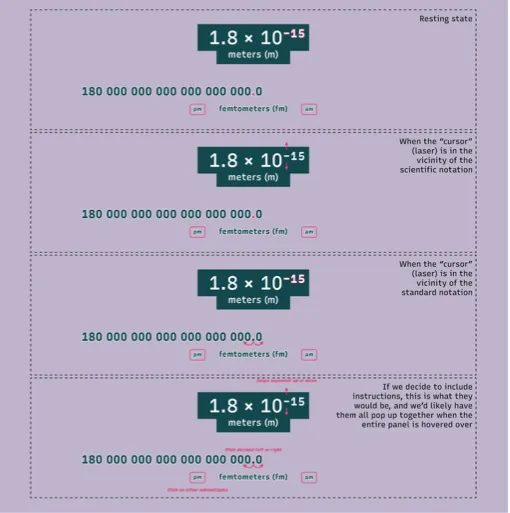
Diagram of the numeric panel that the user interacs with
A variety of enivronment schema were designed in two or more ways
and then put through user testing with user interface experts. Later
testing will be done with general "non-expert" students.

the forest
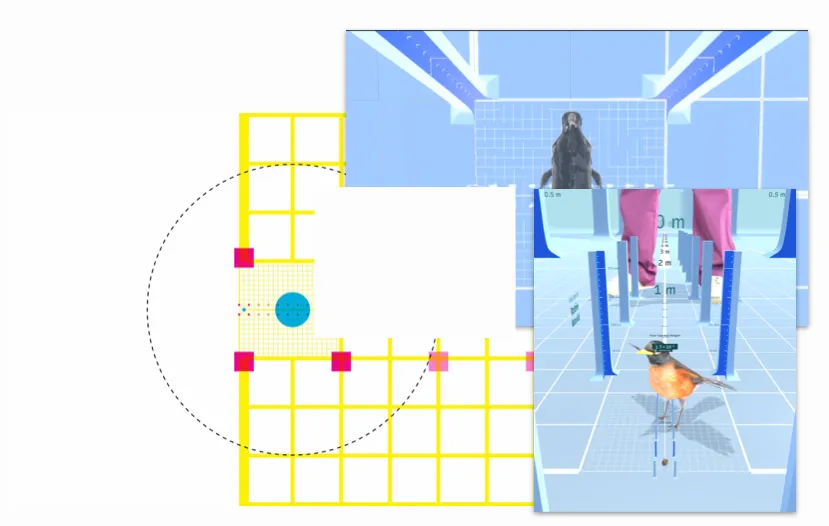
the path
User research revealed a path forwards as well as opening up a
conversation about "usability vs theory".



